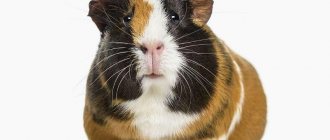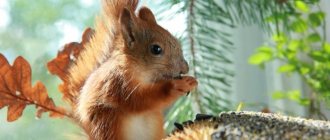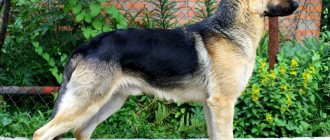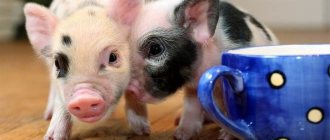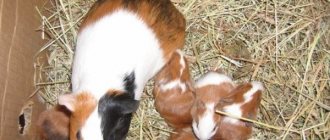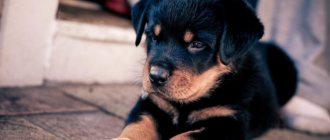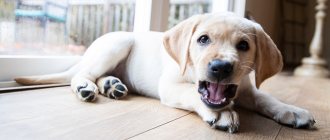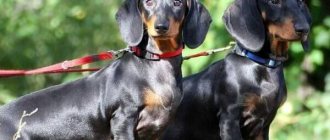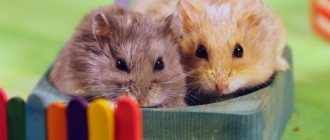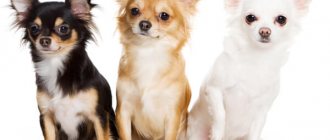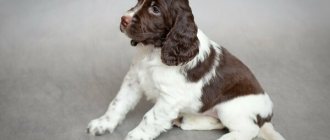Preparing for a Guinea Pig
You cannot start studying the rules of care and maintenance when a pig has already appeared in the house. It is important to familiarize yourself with them in advance. But it is equally important to properly prepare for the meeting of a small pet. It is necessary to arrange spacious housing for the animal in advance with all the necessary equipment and recommended accessories.
The first thing to start preparing for is choosing a suitable place where the pet’s home will be located, that is, its house will be located. The pig should not be exposed to heat or drafts, noise or darkness. The main criteria for selecting a location for a house are distance from sources of noise and heat, cold and drafts. Do not place the pig’s home in direct sunlight, or near windows, doors, radiators, TV, etc. In this case, the place should be well lit (if there is no possibility of natural lighting, it is worth hanging garland lights).
The most comfortable air temperature for most breeds of these animals is +18-20°C, but hairless guinea pigs need a warmer environment.
When a location for the pig’s home has been chosen, the permissible dimensions of the pet’s house are determined. Based on these parameters, a house for the animal is selected. In addition, you will need to purchase housing equipment, accessories, as well as:
- a comb (of course, if the animal is not hairless);
- nail clipper and other grooming equipment;
- carrying (for visits to the veterinarian and other trips).
When purchasing any product for your guinea pig - from basic housing to toys and accessories - safety should be the main selection criterion. The presence of sharp elements, paint coatings, etc. is unacceptable.
Conditions of detention
Cavie likes to be the center of attention, so the cage should be placed in the area of the house where the owners are most often. A pig cannot live alone; it must be in contact with a relative. It is strictly forbidden to keep an animal in the yard or garage. On the street, the animal will catch a cold, and in the garage it can be poisoned by volatile chemicals and die.
The cage should be periodically placed on the windowsill or, in the warm season of the year, taken out to the balcony so that the pet can sunbathe. To prevent the cage from falling from the windowsill, it must be securely fixed.
Choosing a home for a guinea pig
Choosing housing is one of the most important moments in preparing for the arrival of a pet. A pig living at home spends almost all of its time in its personal housing. Its main characteristics should be comfort and safety. There are 4 types of housing suitable for pigs:
- cell;
- aviary;
- shelving or terrarium;
- metal shelving structure.
Cardboard boxes, aquariums, wooden boxes, etc. are not acceptable for keeping a pet. The dune (a special plastic container) is also not suitable for pigs. Despite the fact that it is presented as housing for guinea pigs, living in such a house is detrimental to the animal.
Dune is a plastic container with a removable transparent top. But the design is too cramped for the pet - he cannot help but turn around, much less play (toys simply will not fit in such a house). Therefore, this content option should be abandoned.
Each of the 4 recommended types of houses has certain features, advantages and disadvantages. Therefore, before going to the pet store, you need to familiarize yourself with the main characteristics of all types of houses and determine the most suitable one.
Cell
One of the most convenient options, preferred by experienced pig owners. It is better to choose a cage with a plastic bottom and a removable lattice top. This kind of housing is the easiest to clean. The cage has only one drawback - debris (in the form of food debris, excrement, filler particles, etc.) easily gets out through the bars, so you will have to constantly clean the area where it is placed.
The bars of the grill should be made of metal - the animal can easily gnaw through plastic and wooden ones. Only the top of the cage should be lattice, not the bottom. The animal will fall into the grate bottom with its paws, resulting in injury.
The more spacious the cage, the better. Optimal housing parameters for one animal (the minimum acceptable values are indicated in parentheses):
- size 90×60 cm (60×30 cm);
- height 40 cm (30 cm).
For two animals to live together, you will need a cage with a minimum size of 120x80 cm and a height of 40 cm. The more rodents live side by side, the larger the housing they will need.
Cages with multiple levels are not suitable for pigs. These rodents climb poorly and hardly jump - even having managed to climb to the floor above, the animal will not go back down without the help of its owner. A fall is extremely dangerous for an animal and often leads to death.
Aviary
Housing of this type is placed directly on the floor of the room - it is too large to be placed on cabinets. In the open, spacious enclosure, the animals feel very at home.
In essence, this is a space fenced around the perimeter with metal bars - not all enclosures have a bottom. This house has no roof. It is important to control the height of the walls - it should be at least 40 cm. Otherwise, the animal will easily climb out.
The disadvantages of this dwelling are the easy penetration of debris outside the enclosure, as well as its openness and easy accessibility - if there is already another pet in the house (cat, dog, bird, etc.), you cannot keep a pig in an open enclosure.
Terrarium or shelving
The front wall of such housing is glass, the sides and back are wooden (sometimes plastic). The advantages of a terrarium over a cage are as follows:
- Lack of trash around the house
- possibility of installing multi-level housing (rack) with separate floors.
A multi-level terrarium for rodents is made from ordinary bookcases. To do this, simply attach the front glass walls to the shelves. Of course, the glass should be narrower in width than the distance between the shelves, so that there is free space on top for air circulation.
Metal shelving structure
The main advantage of such a dwelling is that you can create any structure from metal lattice panels, adapting it to the animals, the interior, etc. The disadvantage is the same as for cages (debris flies out through the metal bars).
Arrangement of a guinea pig's home: list of necessary and additional accessories
It is mandatory that your pet’s home be equipped with:
- feeder;
- drinking bowl;
- hay field;
- mini-house for privacy.
The choice of feeders is very diverse. They differ mainly:
- by material - ceramic, metal or plastic;
- by type of installation - suspended and floor-mounted.
The best option is hanging ones. This type of installation prevents contamination of food with filler particles, etc., and also ensures that the animal does not turn over the bowl. But not every type of house allows you to install a hanging feeder. In this case, you should prefer ceramic bowls - they are heavier, so they are more difficult to tip over.
As for the drinking bowl, a regular bowl of water will not do. It is necessary to purchase a special hanging-type device in the form of an inverted bottle, at the end of which a ball valve is attached, through which water flows. A hanging drinker is easier to install than a bowl, so it is suitable for any home.
A hay barn in a pig's house is necessary for storing hay, which must be included in the animal's diet. Through this device, the pig can easily get a fresh bunch for consumption whenever he wishes.
Whatever the size of the rodent’s main home, it is imperative to install a special small shelter in its area, where the animal can at any time retire, hide, rest, etc.
Additionally, it is recommended to equip the pig's house:
- hammock;
- beds;
- toys (balls, cubes, etc.);
- labyrinths;
- tunnels.
It is worth noting that walking balls and running wheels are equipment for hamsters and are not suitable for pigs. The use of these devices by pigs is fraught with serious injuries to the spine and limbs.
In order for a rodent to grind its teeth, it is necessary to place a special stone - salt or mineral - in its house.
Nutrition
How and how long guinea pigs live depends largely on how they eat. Properly and properly fed animals have shiny and beautiful fur, strong and healthy teeth and claws. In rodents deficient in vitamins and microelements, the coat thins and becomes dull. To prevent the fur from losing its shine and silkiness, it is recommended to include flax and sunflower seeds in your pet’s diet. Pigs tend to gain excess weight, so their diet should be moderate.
What and how to feed your guinea pig
A properly composed menu plays no less important role in keeping the animal than providing comfortable living conditions. The pig diet should be based on hay, greens and vegetables, not grains and cereals. This is why pigs should not be fed formulas intended for hamsters or rats.
The animal's daily menu should include dried hay, fresh vegetables, herbs and herbs.
You can feed your rodent fresh vegetables:
- zucchini;
- cabbage;
- carrots;
- cucumber;
- tomato;
- beets;
- celery;
- pumpkin
You shouldn’t feed your pet the same thing for weeks; it’s better to alternate types of vegetables - for example, pumpkin today, tomato tomorrow, etc.
As for fresh herbs and greens, it is recommended to feed the animal:
- clover;
- nettle;
- alfalfa;
- plantain;
- salad.
The pigs are fed 2-3 times every day. It is important to ensure that your pet always has plenty of not only food, but also clean water (necessarily boiled). The daily volume of food provided should be within 30% of the pet’s weight. If this norm is exceeded, the rodent will begin to develop obesity.
You cannot leave your pet without food - after 18 hours of fasting, an irreversible process of self-destruction will begin in the pet’s body. The animal should always have free access to hay. In winter, you should give your pet sprouted cereal grains as fresh grass.
Dry grain mixtures are not included in the mandatory diet. They can be included in the menu of only those animals that lead a mobile, active lifestyle. But in a volume of no more than 1 tbsp. in a day. Such food is prohibited for sedentary animals; it will not bring any benefit - the pig will only get fat.
Additional feeding
In addition to basic products, it is advisable to feed the rodent nuts, fresh or dried fruits and berries 2-3 times a week
- peanuts;
- walnut;
- hazelnuts;
- banana;
- cherries;
- pear;
- strawberries;
- apple;
- raisins;
- dried apricots.
The pet’s body will benefit from eating twigs of various plants (possibly with leaves) 3-4 times a week. By gnawing on hard twigs, the animal wears down its teeth, which is also important as saturating the body with necessary substances. Twigs approved for consumption include:
- pear;
- willow;
- maple;
- raspberry;
- blueberry;
- apple;
- ash.
Prohibited Products
Under no circumstances should the animal be fed:
- beans;
- branches of pine needles;
- peas;
- mushrooms;
- oak branches;
- fermented milk products;
- sausage;
- onions;
- flour products (bread, pasta, etc.);
- meat;
- fish;
- sweets;
- beans;
- garlic;
- eggs, etc.
Any products of animal origin, as well as all products from the master's table, are prohibited for the animal.
It is strictly forbidden to give the animal any stale, spoiled or rotten foods, even those that are mandatory.
How to properly handle a guinea pig
The small animal is quite fragile and very shy. He needs care and attention. But still, the main thing you should focus on when contacting him is:
- accuracy;
- delicacy;
- caution.
For a pig to live long and happily, you need to love it, take care of it and provide it with comfortable conditions. The animal must be kept in a quiet, calm environment; it must be protected from nervous shocks.
Pigs are frightened by any noise - there is no need to turn on the TV or music loudly, or speak in a raised tone near the animal, or even shout at it. In addition, it is prohibited:
- throw something at the animal;
- knock on his home;
- shake a pet or a house with it;
- lift your pet by the paws or scruff of the neck.
Violence towards a rodent is also prohibited - you cannot grab it against its will, etc. The only acceptable exception is if the animal is sick and needs to be examined urgently or given medicine.
Bathing
When the fur becomes dirty, the pet needs to be bathed. A guinea pig can bathe in a basin or sink. The water in the basin should not be higher than 3 cm. For bath procedures, it is best to purchase an easily washable pet shampoo for rodents. The shampoo should be rubbed into the fur with soft, gentle, massage movements. After bathing, the animal should be protected from drafts. Is it possible to dry your pet with a hairdryer? It is possible, but only at the lowest power.
Also, do not forget about anal hygiene. In this place, animals often get stuck with particles of feces, hay, and dirt. Therefore, the owner needs to periodically clean the pet’s backside from accumulated dirt.
Games, training and taming a pet
Pigs are characterized by playfulness and sociability. They will gladly and joyfully share active games and various entertainments with their owner. In addition, these animals are smart and quick-witted; they are easy to tame and teach simple tricks.
How to tame
To tame a rodent, the owner needs:
- Let your pet get used to it. At first, you should not pick up a new pet. First, you should meet and make friends with him from a distance. To do this, you need to regularly approach the animal’s house and communicate with it. You need to speak in a gentle, quiet voice. After a series of such exercises, the animal will begin to recognize its owner by the first sounds of its voice.
- Teach the animal to eat from your hand. To do this, you need to put a treat in your palm and hand it to the pig. When the animal, interested in the treat, comes close to the hand, it is important to behave calmly. It is prohibited to grab a small pet or make any sudden movements. Otherwise, the pig will get scared and stop trusting its owner. If the rules are followed, soon the animal will, as soon as it sees the owner’s hands, run to him.
- Now you can pick up your pet. This must be done carefully. Having pulled the animal out of the house outside, you can hug it lightly. If she is nervous, you can reassure her through gentle conversation and gentle stroking on the back. When the little animal understands that the owner does not pose a danger to her, she will be happy to spend time with him - either in a hug or playing.
How to play
The simplest thing is to play detective with the animal. To do this, you just need to hide pieces of treats in different corners of his home. In search of a tasty hiding place, the animal will prove itself to be a real Sherlock Holmes.
Another simple game is football. It is enough to provide the rodent with a ball (preferably paper, but plastic is also possible). The pet will happily chase him, pushing him with his head, from one end of the home to the other.
A simple cardboard box is also good for playing with your pig. By cutting holes in it the width of the pet, you can make a kind of labyrinth out of it. The animal will enthusiastically move from passage to passage.
You can also diversify your pet’s leisure time with the help of toys for pigs purchased at a pet store.
How to train
The animal can be taught to respond to a name, and also to spin around its axis. A treat as a reward for a well-performed trick will help with this. It is better to give your guinea pig a short name.
To teach a pig to respond to its name, it is enough to call it by name every time you give it daily food or a special treat. After a few trainings, the animal will begin to come running to its owner as soon as he says his name.
To teach a pig to spin, you should take a treat in your hand, let your pet smell it, and then slowly draw a circle around the animal with your hand holding the treat. Tempted by the treat, the pet will turn to follow the hand. When the animal spins a full circle, you need to give it a treat.
Water treatments
The rodent does not like to bathe, so you only need to wash it if the animal gets dirty. You can’t wet your pig’s head; when you can’t do without shampoo, you should use either baby shampoo or a special shampoo for kevi, which needs to be completely rinsed off. The optimal temperature for swimming is 38 degrees. A lower temperature can cause hypothermia and the animal will get sick. Water that is too hot can burn the animal.
The anal sac should be washed especially thoroughly. To do this, lightly press on the pet’s stomach and remove the feces using a cotton swab.
In males, the foreskin is washed, as a large amount of dirt can accumulate here.
After the rodent is removed from the water, it must be dried with a towel. If the pet is a long-haired breed, then you can use a hairdryer, of course, when the animal is not frightened by its noise.
Tips for caring for guinea pigs
Proper care of a guinea pig includes maintaining cleanliness in the animal's home. Cleaning must be carried out regularly and according to the rules. They are as follows:
- carrying out regular cleaning - every 3-4 days, general cleaning - once a week;
- the litter-filler is changed every 3 days;
- food and drinking bowls are washed daily;
- When starting to clean the pig’s home, the animal is temporarily placed in a box with high sides;
- Before cleaning begins, all contents are removed from the house - from toys to bowls;
- Having removed the used contaminated filler, the bottom of the home must be washed with clean water and then wiped dry;
- All walls of the guinea pig’s home are wiped with a damp cloth;
- Glass and plastic items are washed with clean warm water and left to dry;
- the shelter house is wiped with a damp cloth;
- Having finished cleaning, the bottom of the home is covered with a new layer of filler, then bowls for food and drink and other equipment are put in place.
When carrying out general cleaning, the pet’s home and all the objects it uses are not just washed, but disinfected (with soda or vinegar essence). Chemicals cannot be used for these purposes.
Reproduction
A male guinea pig becomes sexually mature at 8-12 weeks, and a female at 7-8 weeks. But the recommended age for breeding is 10 months and older. Animals forming a pair must be healthy, of the same age and the same breed, but they must not be relatives.
It is advisable that fertilization occurs no later than November. Estrus in pigs lasts 2 days and repeats every 12-20 days. The best time for mating is the first 12 hours.
The duration of pregnancy is approximately 10 weeks. Multiple pregnancies are often accompanied by early delivery. The future mother pig needs complete rest - she should not be picked up, stroked or otherwise disturbed. Any excitement is fraught with miscarriage.
Delivery lasts no more than half an hour. Piglets appear at intervals of 3-4 minutes. One litter usually produces 1-5 babies.
A unique language of sounds
With the help of certain sounds, small rodents express their mood and emotions:
- a persistent squeak indicates severe hunger.
- Males roar in front of each other to show their importance. This is a sign that the male or females are very angry and irritated. They may also chatter and grind their teeth.
- Prolonged cackling and cooing are evidence of the pet’s good-natured state of mind.
- When paired, pigs often grunt. This is them greeting each other and exploring.
- Males coo to females when they are trying to mate.
- Quiet or loud squeals and whistles are a sign of pleasure.
Guinea pigs may moan or squeak loudly. This indicates that the pet is in pain. If your pet is sick, he will be lethargic and drowsy. Loses active appetite. His eyes may become sour and watery. In these cases, it is better to take the rodent to the veterinary clinic for treatment.
What makes a guinea pig sick?
Pigs get sick infrequently, but still their body is not protected from disease. The most common ones include:
- colds;
- parasite infection;
- gastrointestinal problems;
- eye and ear diseases.
If you notice any deviation from the animal’s usual behavior (refusal of food, apathy, etc.) or other suspicious sign or symptom (hair loss, mucous discharge, cough, convulsions, etc.), you must immediately contact a veterinarian.
Animal Species
Friendly pets differ in color and fur length. Among them are the following colors:
- tortoiseshell;
- agouti;
- Dutch;
- 2 or 3 colors;
- Himalayan;
- Dalmatian;
- self.
Among the short-haired rodents, the following breeds are distinguished: Abyssinian, Rex, American (English), Teddy, Crested, Ridgeback. Among the long-haired representatives, there are Silk or Sheltie, Texel and Peruvian breeds. There are rodents that have no hair at all - Baldwin and Skinny.
